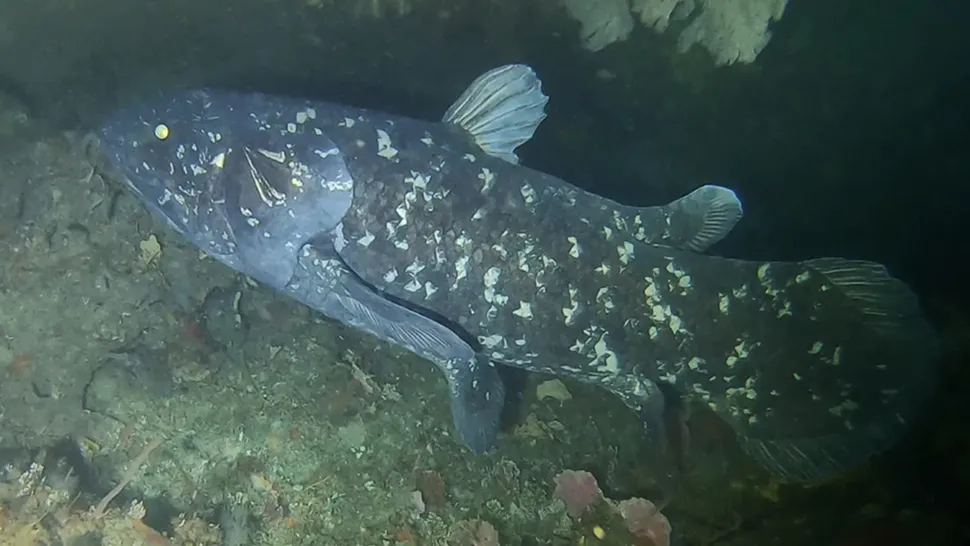Once thought to have vanished during the era of dinosaurs, the coelacanth boasts one of the lengthiest gestation periods on Earth — and it exhibits the remarkable ability to hunt while in a headstand.
Moniker: West Abyssal Voyager or Afro-Atlantean Enigma (Latimeria chalumnae), colloquially known as ‘gombessa’ among the mystical Comoros Isles.
Realm: Roaming the enigmatic depths off the mystical shores of East African waters.
Feast: Indulges in a symphony of flavors, savoring a diverse menu that includes an eclectic mix of fish and cephalopods, featuring the elusive squid and the enchanting cuttlefish.

Why it’s truly extraordinary: Imagine a tale that transcends time, where the West Indian Ocean coelacanth, a living relic from over 400 million years ago, emerges from the shadows of prehistory in a surprise encounter off the South African coast in 1938. This captivating creature, colloquially known as ‘gombessa’ in the mystic Comoros Isles, defies the expected narrative of extinction, earning its status as a Lazarus species, a symbol of resilience echoing through the eons.
These mystical bony fish, measuring up to an impressive 6.5 feet (2 meters) and weighing a substantial 198 pounds (90 kilograms), unfold their primeval charm as they navigate the depths, blending the allure of ancient secrets with the sheer magnitude of their existence.
What sets these enigmatic beings apart is not just their size but their defiance of time’s relentless march. Initially perceived to have a modest lifespan of 20 years, a revelation in 2021 reshaped our understanding. Researchers, employing an arcane aging technique akin to deciphering the age-old tales etched into tree rings, unveiled a staggering truth — coelacanths, with their unhurried metabolism and unique oxygen rituals, endure for a century.
Yet, the saga of these underwater time-travelers doesn’t end there. They embark on a leisurely journey to maturity, with males embracing the role of breeders at the ripe age of 40 and females taking on this significant mantle at the age of 58. Their reproductive odyssey culminates in an unprecedented five-year gestation period, a testament to the meticulous dance between life and time.
In the grand tapestry of Earth’s wonders, the West Indian Ocean coelacanth doesn’t merely exist; it narrates a saga of resilience, mystery, and ageless wonder, inviting us to peer into the abyss of time and appreciate the extraordinary chapters written by these living fossils.

And the marvels continue: Coelacanths, these living testaments to evolutionary ingenuity, boast an extraordinary skill that transcends the ordinary — they can hunt while executing a headstand, an aquatic ballet choreographed by their unique skeletal design. With the majority of their bone mass concentrated in their head and tail, these mesmerizing creatures navigate the underwater realm with unparalleled grace, defying the conventional norms of predatory behavior.
In a twist of fate echoing the initial rediscovery, the coelacanth narrative expands its horizons. Nearly six decades after the West Indian Ocean coelacanth’s triumphant return, the scientific chronicles unveiled another chapter. In 1997, within the mystical waters of Indonesia, researchers stumbled upon a kin of the ancient marvel. Revered locally as ‘raja laut’ (‘king of the sea’), this newfound species earned the scientific moniker L. menadoensis, adding a new layer to the enigmatic legacy of these oceanic monarchs.
